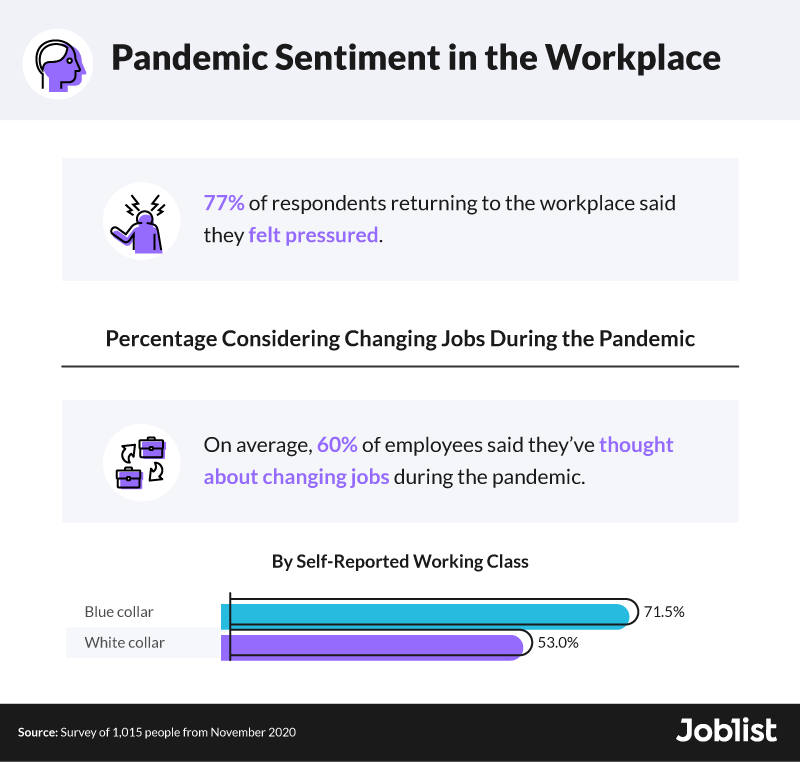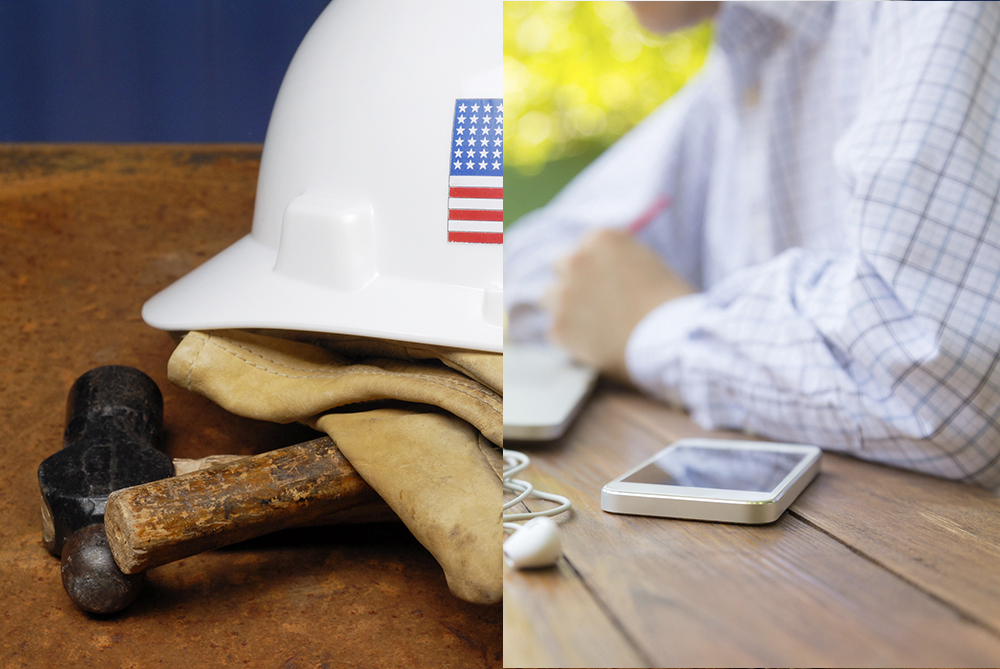In the year since the COVID-19 pandemic began, the working world has shifted much of its focus to the question of remote work. What was once a rare (and often coveted) opportunity for working professionals has become the new normal, creating a potential permanent standard for millions of Americans and exposing the struggles of adopting a life outside of the office.
While remote work, including telecommuting or hybrid work, may offer more flexibility on the surface, nothing about 2020 (or even 2021) exists in a vacuum. For the millions of professionals who’ve made their home their office, the transition hasn’t been without its challenges. Working from home often means working longer hours and reduced work/life balance, in addition to overlapping responsibilities (particularly for working parents).
But with so much attention on the plight of working from home, those with the opportunity to do so may not be thinking about the challenges—and dangers—of having to work on-site in the midst of a global pandemic.
Work Inequity During the COVID-19 Pandemic
While millions of Americans are still struggling to adjust to working from home, millions more haven’t been afforded that luxury. Blue-collar professionals and those working in jobs that can’t be completed remotely have experienced a very different reality while navigating the pandemic, layoffs and furloughs, and their own personal health.
More than broadening the shift between white- and blue-collar professionals, there’s also increasing concern that the COVID-19 pandemic could dramatically worsen the class divide between Americans across the country.
For a closer look at working conditions and differences between white- and blue-collar jobs during the COVID-19 pandemic, Joblist surveyed over 1,000 working Americans about their experiences navigating professional responsibilities and their personal health in the past year.
Here are some important findings.
Job Loss During Pandemic
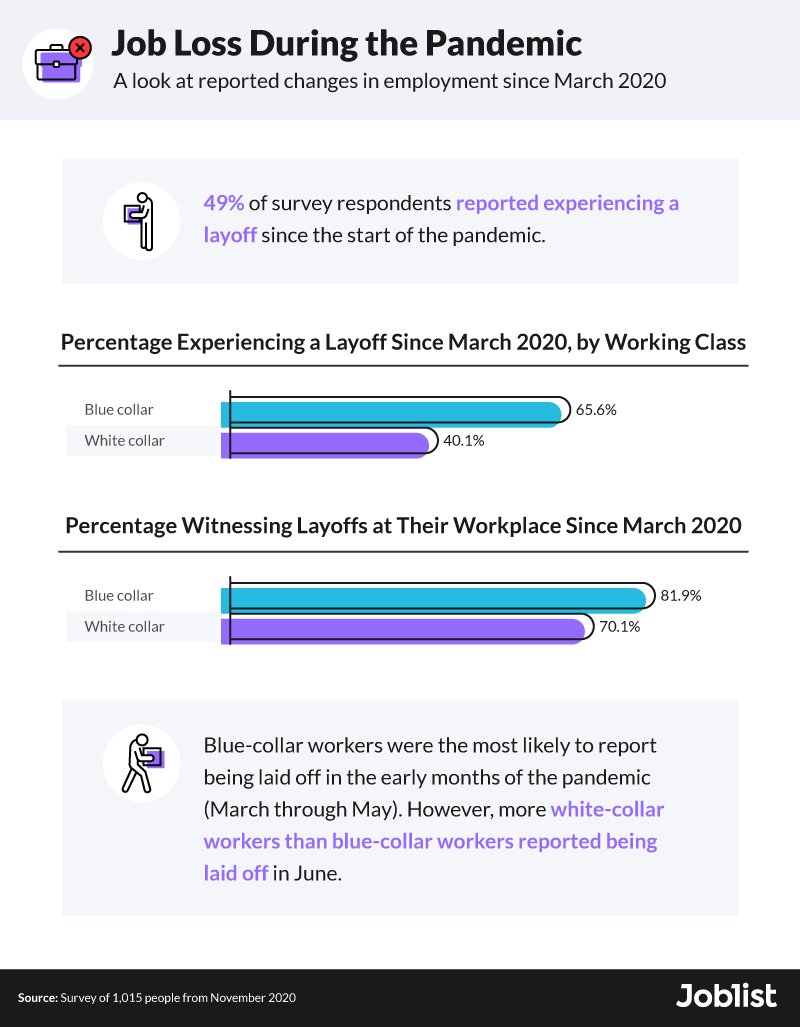
Work/Life Balance
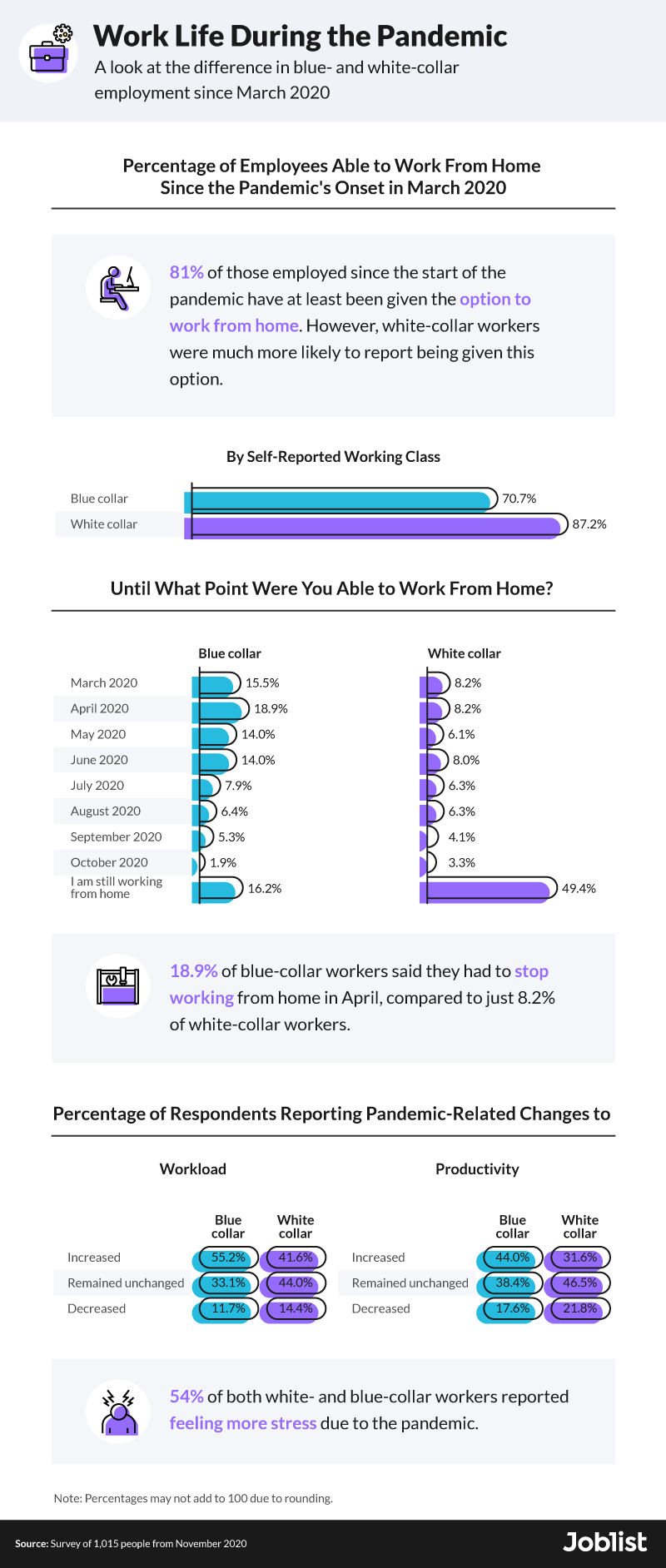
Workplace Prevention
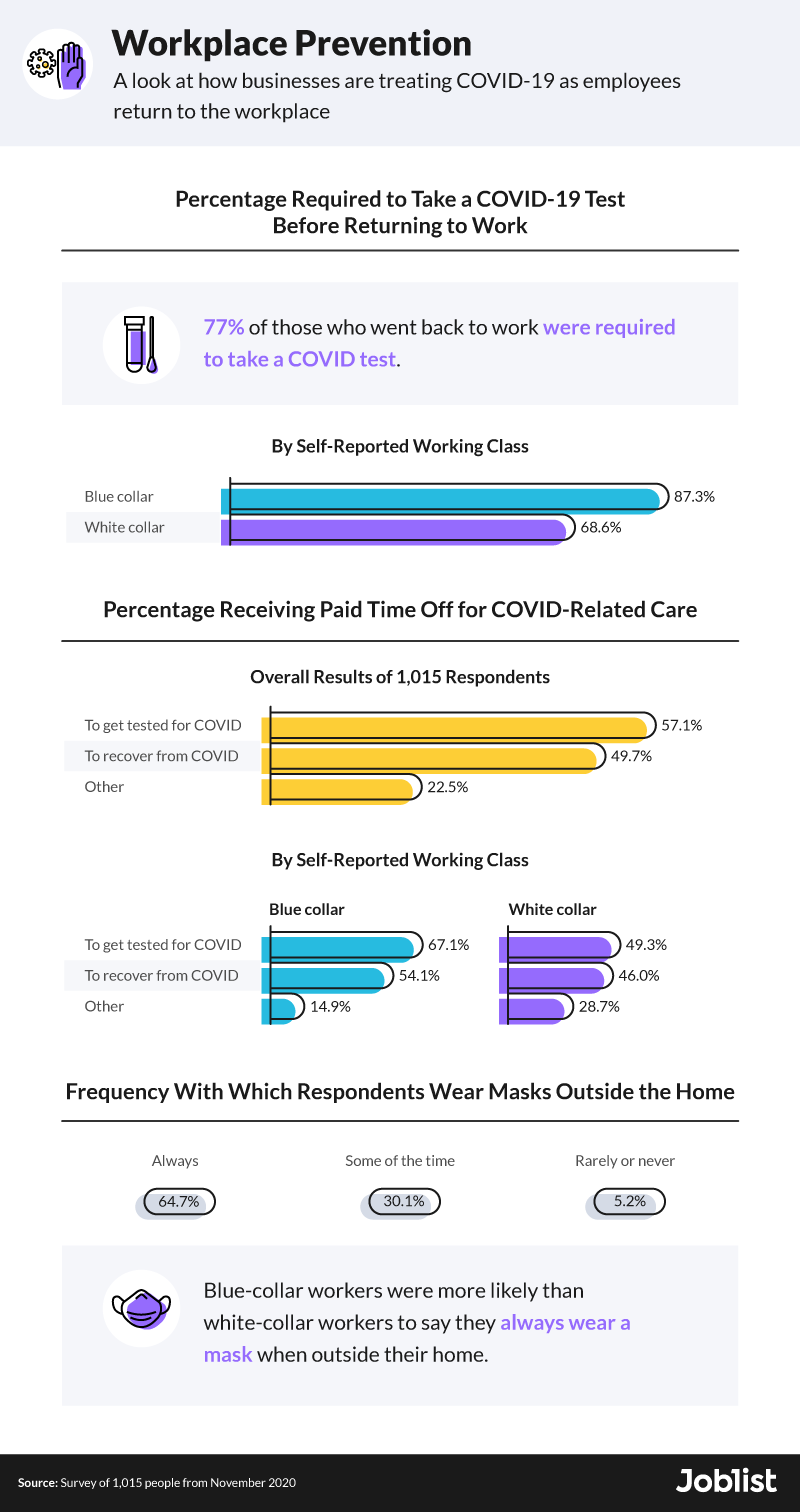
Pandemic Sentiment
